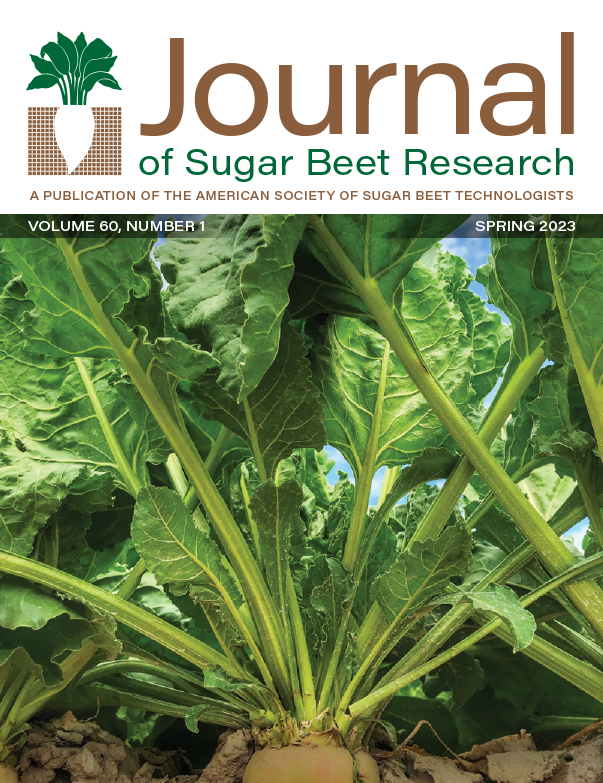Abstract
Common ragweed (Ambrosia artimisiifolia) is a troublesome summer annual broadleaf weed in sugarbeet in Minnesota and North Dakota. Growers attending the 2022 sugarbeet growers’ seminars reported common ragweed as their second most troublesome weed following waterhemp (Amaranthus tuberculatus). Past experiments investigating chemical control options reported targeting common ragweed less than 5-cm with repeat glyphosate plus clopyralid applications at 1,010 g ha-1 plus 53 g ha-1, respectively, provided 92% control. Repeat applications of clopyralid plus glyphosate were more effective on both small (≤5 cm) and larger (≤10 cm) common ragweed; however, common ragweed 15-cm or greater were too large for POST control in sugarbeet. Recent greenhouse evaluation of common ragweed sourced from fields with weed control failures confirmed that the application of glyphosate alone is no longer an effective mode of action for common ragweed control. In addition, certain common ragweed populations from 2021 also demonstrated alarming tolerance to clopyralid; however, clopyralid eventually provided common ragweed suppression at 158 g ha-1. A field experiment conducted in 2022 considered common ragweed control from a more concentrated formulation of clopyralid (Stinger HL) at different rates, timings, and tank mixtures. Results suggest common ragweed populations are adapting to sugarbeet herbicides and sizes ranging from 5- to 10-cm are becoming increasingly difficult to control. Clopyralid rates to 105 g ha-1 plus glyphosate provided unacceptable control when applied to common ragweed greater than 5-cm. Targeting common ragweed less than 5-cm with repeat clopyralid applications at 79 g ha-1 or greater plus glyphosate at 1,050 g ha-1 provides the greatest common ragweed control in sugarbeet. Timing herbicide applications to common ragweed size rather than sugarbeet growth stage is crucial.

